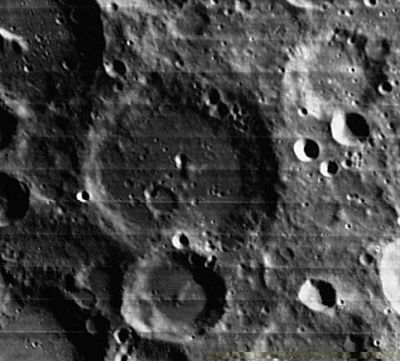Rosenberger
Contents
Rosenberger
|
Lat: 55.4°S, Long: 43.1°E, Diam: 95 km, Depth: 3.24 km, Rükl: 75, pre-Nectarian |
Images
LPOD Photo Gallery Lunar Orbiter Images Apollo Images
Maps
(LAC zone 128A4) USGS Digital Atlas PDF
Description
Rosenberg is a typical highlands crater - old enough to have lost is freshness and most of its terracing (despite what Elger writes). It has a broad flat floor and just a small central peak.
Description: Elger
(IAU Directions) ROSENBERGER.--This formation, about 50 miles in diameter, is one of the remarkable group of large rings to which Vlacq, Hommel, Pitiscus, &c., belong. Its walls, though of only moderate altitude, are distinctly terraced. In addition to a prominent central mountain (W. of which Schmidt shows two craters), there is a large crater on the S. side of the floor, and many smaller craters and crater-pits.
Description: Wikipedia
Additional Information
Depth data from Kurt Fisher database
- Westfall, 2000: 3.24 km
- Viscardy, 1985: 2.5 km
- Cherrington, 1969: 2.19 km
Nomenclature
Otto August Rosenberger (August 10, 1800 – January 23, 1890) was a German astronomer and mathematician. He graduated from the University of Königsberg, and was noted for his study of comets.
LPOD Articles
Bibliography
